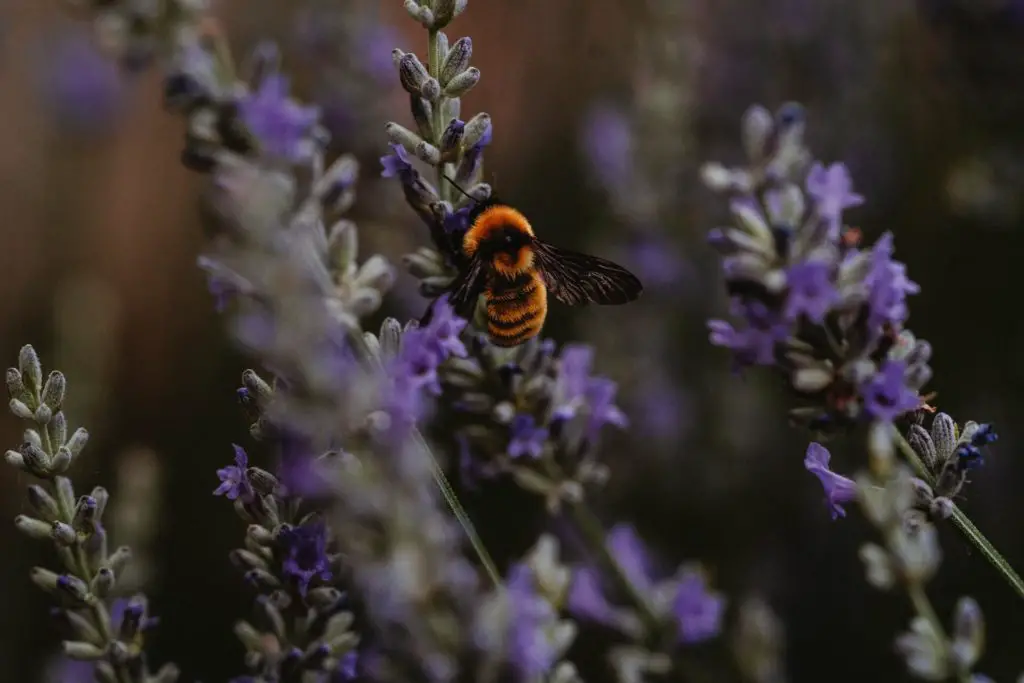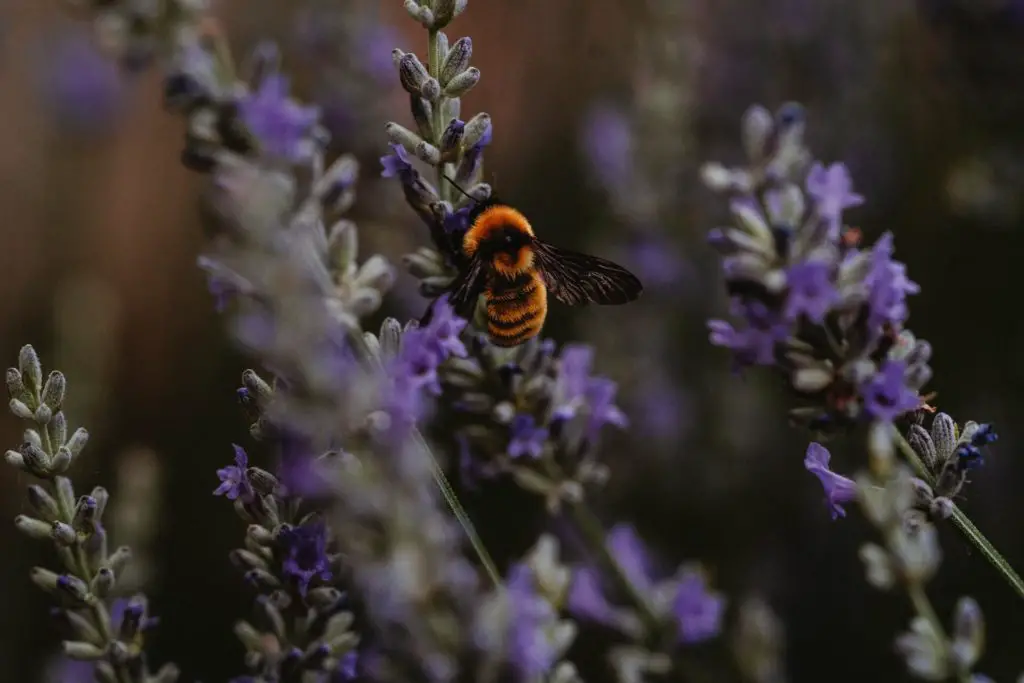Last updated on September 21st, 2023 at 12:00 pm
The term mining bee refers to a group of bee species belonging to the genus Andrena. In the UK, there are 67 species of mining bee, including the tawny mining bee, ashy mining bee and Clarke’s mining bee.
What Do Mining Bees Look Like?
Identifying mining bees away from their nests can be tricky. With dozens of species in the UK alone, there is a considerable variation in appearance between some species. Many mining bees, such as the Tawny Mining bee are brightly coloured and have lots of fuzzy hairs on their bodies.
Ashy Mining bees look like small flying pandas with their thick tufts of white-gold hairs and a glossy abdomen that appears blue-black in colour.
Other species, like the Early Mining bee, have finer, sparser hairs. Early Mining bees have small tufts of reddish-brown hairs on their thorax and tail, while their abdomen is black with very sparse hairs.
Mining bee species with dull colouration and spare hairs are often mistaken for house flies. The easiest way to identify mining bees is by watching them construct their nests since mining bees are ground dwellers.

Do Mining Bees Sting?
Female mining bees have stingers, but they are rarely aggressive. They are not a swarming species and will only sting if they feel threatened or to defend their nest. Many male mining bees do not have stingers.
When Can Mining Bees Be Seen?
Mining bees are most active during springtime, but they can be seen from early spring through until late summer. Females begin work on their nest during the spring in preparation for mating and laying eggs. During the summer, they collect pollen which is stored within the chambers of their nest burrow.
Male mining bees have a short lifespan. They zigzag from nest to nest, waiting for the females to emerge so they can mate. Most male mining bees only live a few months.
From late autumn, most female mining bees will hibernate or go into a state of torpor in their nests with their new brood. Torpor is a state of reduced activity and metabolic rate. Bees may sleep for short periods and wake for a few hours to feed from their pollen stores and check on their brood.
How Do Mining Bees Nest?
Mining bees are ground nesters, constructing tunnels in soft, sandy soil close to food and pollen sites. Although mining bees are solitary species, there can be hundreds of nests built close together. This is known as an aggregation. Females dig out tunnels which can reach lengths of up to 60cm. The entrance to a mining bee nest is clearly marked by a mound of loose soil with a small hole at the centre.
A female mining bee constructs her nest in a particular way. She will dig an entrance tunnel approximately 8cm deep. From this main tunnel, she will then dig out several small chambers. Each chamber is covered with a waterproof secretion produced by a gland in her abdomen.
In each chamber, she deposits a ball of pollen and nectar. These balls will provide food for her offspring after they hatch. A single female mining bee can make hundreds of trips to collect pollen for her nest, pollinating hundreds of flowers in the process.
Once her nest is complete, she will choose a male from the many that patrol the area. After mating with her chosen male, the female will lay a single egg in each chamber within her nest. She will then seal each chamber. The larvae that hatch will pupate throughout summer, but they will not dig their way out of their chamber until the following spring.
Where Do Mining Bees Go In Winter?
During the cold winter months, mining bees will remain in their nest in a state called torpor. This is similar to hibernation, but the bees are still awake. Torpor is a physical state in which metabolic rate and body temperature is reduced. This helps to conserve energy and allows the bees to go for long periods without needing to find food. During torpor, bees will move around much slower and do not leave the nest.
Do Mining Bees Make Honey?
Unlike honeybees, mining bees do not make honey. They store pollen and nectar in their nests to feed their young, but the nests do not contain any honeycomb or honey.
Which Flowers Do Mining Bees Pollinate?
Mining bees tend to specialise in a small number of plants or flowers to find pollen. UK mining bees prefer plants, shrubs and trees from the willow and rose families. They are also fond of fruit-producing vegetation such as apple trees and blueberry bushes.
Are Mining Bees Good For Your Garden?
The way that mining bees construct their nests is helpful to your garden. The tunnels create natural aeration of the soil and improve draining. Having a mining bee nest under your lawn also means that your flowers and plants will be pollinated each year. The improved aeration of the soil also allows more nutrients to reach plant roots, so your flower beds will be much healthier.
Conclusion
Mining bees are wonderful pollinators to have living in your garden. You can encourage mining bees by leaving a sparse patch of ground where they can construct their nests and plant pollen-friendly flowers and plants to provide a nearby food source. Mining bees are one of the best species to have in your garden as they are gentle species and do not sting.




